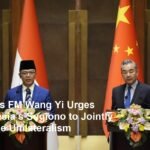Kyrgyzstan’s recent announcement of a national competition to compose a new national anthem signals more than just a musical rearrangement; it represents a profound yearning to redefine national identity and shed the lingering vestiges of its Soviet past. This initiative, detailed in various news reports, underscores the ongoing efforts of post-Soviet states to forge unique and independent cultural narratives. The quest for a new anthem is a complex undertaking, laden with political, social, and cultural implications, and offers a window into the evolving self-perception of a nation striving for self-determination.
The current Kyrgyz anthem, adopted in 1992, retains musical elements from the Soviet-era anthem, a composition by Nasyr Davlesov and Kalyi Moldobasanov. While the lyrics were rewritten to reflect the newfound independence of Kyrgyzstan, the underlying melody continues to evoke associations with the Soviet Union. This lingering connection is precisely what the current government seeks to address. The impetus for change stems from a desire to create a more authentic and resonant representation of Kyrgyz values, history, and aspirations. The hope is that a new anthem will not only inspire national pride but also reflect the unique cultural heritage that distinguishes Kyrgyzstan from its former Soviet masters.
The competition itself is a testament to the importance placed on public participation in this endeavor. The government has encouraged submissions from composers, poets, and citizens across the country, promising a substantial reward for the winning entry. This open approach is designed to ensure that the new anthem genuinely reflects the collective will of the Kyrgyz people and fosters a sense of ownership over the national symbol. The selection process will undoubtedly be rigorous, involving panels of experts from various fields, including musicology, history, and linguistics. The chosen composition will need to encapsulate the essence of Kyrgyzstan, paying homage to its rich nomadic heritage, its stunning natural beauty, and its commitment to a democratic future.
However, the task of creating a universally accepted national anthem is fraught with challenges. Kyrgyzstan is a diverse country with a complex ethnic tapestry. Balancing the representation of different cultural perspectives within the confines of a single song requires careful consideration and sensitivity. There is also the risk that the new anthem could become a source of division, particularly if it is perceived to favor one group over another. Ensuring inclusivity and avoiding the perpetuation of existing inequalities will be crucial to the success of the project.
Furthermore, the adoption of a new anthem inevitably involves a process of collective forgetting and remembering. The Soviet era, while viewed by many as a period of oppression, also brought significant advancements in areas such as education and infrastructure. Finding a way to acknowledge this complex legacy without romanticizing the Soviet past is a delicate balancing act. The new anthem must look forward, embracing the potential of a sovereign and independent Kyrgyzstan, while acknowledging the lessons learned from its history.
In conclusion, Kyrgyzstan’s anthem competition represents a significant step in the nation’s ongoing journey of self-discovery. It is an attempt to break free from the lingering shadow of the Soviet Union and forge a new national identity rooted in its own unique history, culture, and aspirations. While the challenges are significant, the potential rewards – a unifying symbol of national pride and a powerful expression of Kyrgyz identity – are well worth the effort. The success of this endeavor will depend on the ability of the Kyrgyz people to engage in a thoughtful and inclusive dialogue about their past, present, and future, ultimately creating an anthem that truly resonates with the heart and soul of the nation.









